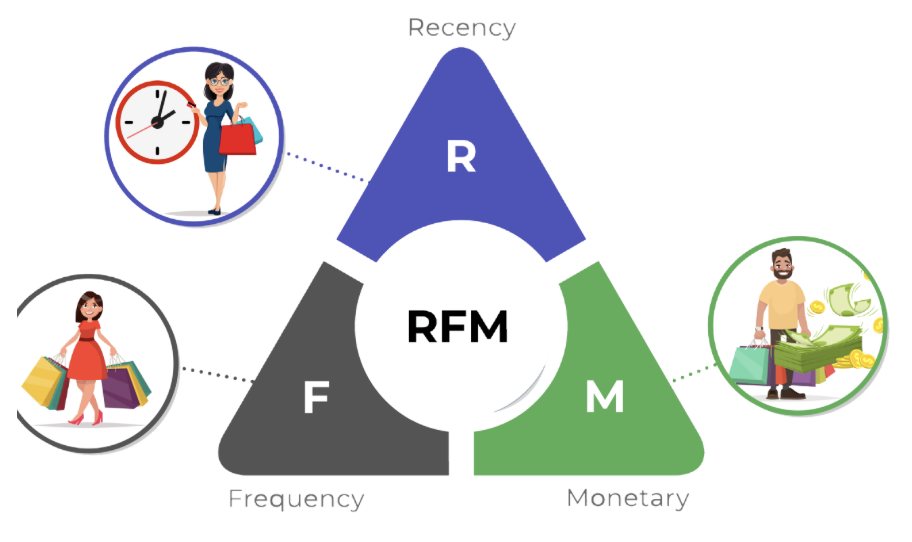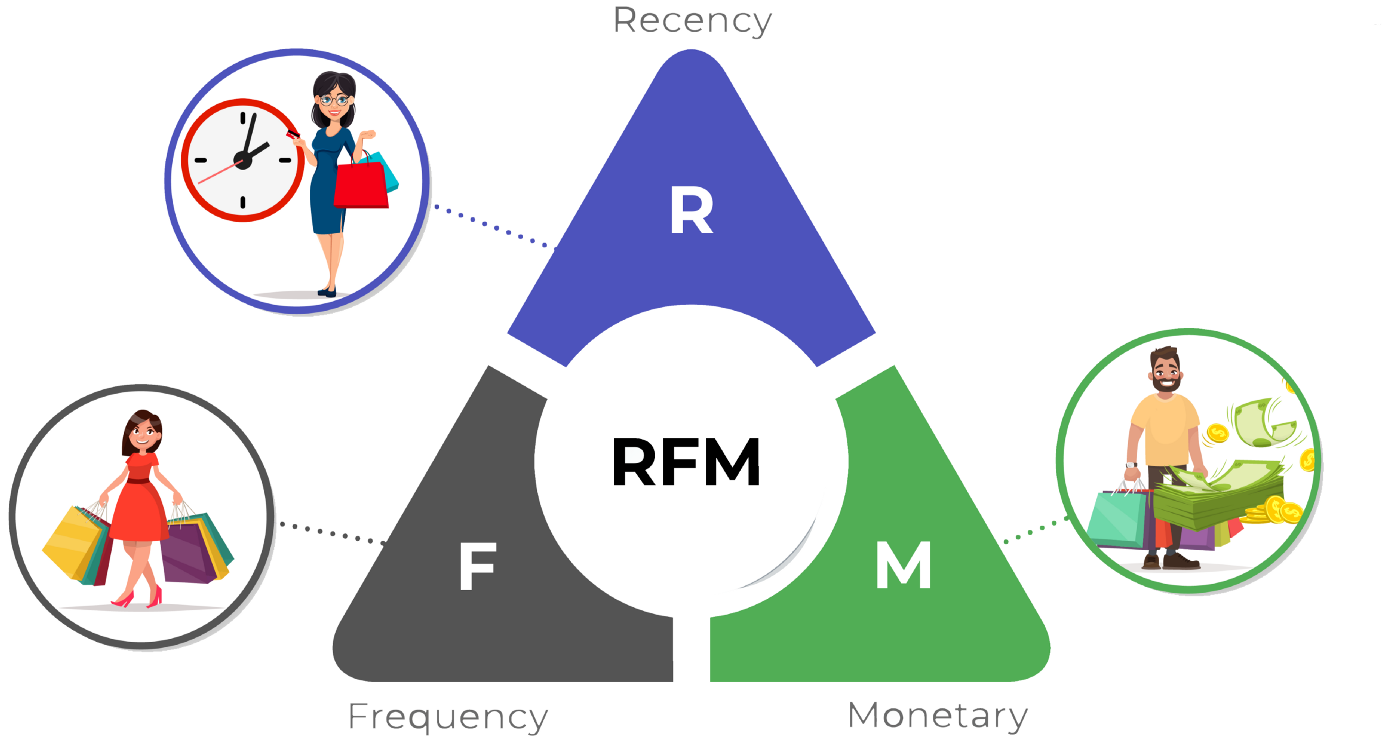
Analytica House
Sep 4, 2022What is RFM Analysis?

What is the most valuable asset for a company? Its tangible assets or inventory? Given developments in supply chains and the level of financial solutions, if you’re especially an e-commerce business, your most valuable asset is your customers.
Beyond your sales, when planning your inventory levels, ad investments, and many operational activities, you must consider the future behavior of your customers.
In today’s age of increasing digitalization and personalization, getting to know your customers is easier thanks to big data—but it also becomes more challenging as customer volume and diversity grow.
In this article, we’ll discuss RFM analysis, one of the fundamental analyses you can use to segment your customers and build effective audiences.
What Is RFM Analysis?
RFM analysis segments customers based on purchase data. As an algorithm, it uses unsupervised clustering (K-means). The “RFM” acronym stands for three key metrics. First, let’s look at what each metric means.
Recency
Calculated by the number of days between the analysis reference date and the customer’s most recent purchase date.
Frequency
The number of purchases the customer made in the analysis period. If many customers purchased only once—skewing the distribution—you may treat one-time buyers separately for a healthier analysis.
Monetary
The total monetary value of the customer’s purchases in the analysis period. Two considerations: 1) If purchases are in multiple currencies, convert them to a single currency. 2) If you have B2B wholesale orders, exclude them so they don’t skew the distribution.

What Questions Can RFM Analysis Answer?
Although RFM is purchase-behavior–based, it can answer many strategic questions about both new and existing customers, for example:
- Who are our most valuable customers?
- Which customers are at risk of churn?
- Which customers deserve retention efforts?
- Which customers share similar behavior for targeted campaigns?
Why Is RFM Analysis Important?
As every marketer knows, retaining existing customers is far cheaper than acquiring new ones. By using RFM to gauge how close customers are to conversion or churn, you can both retain at-risk customers and encourage more spending among active customers. You can also classify newly acquired customers into existing RFM segments to start personalized marketing before you’ve collected much new data.
Required Data Structure
RFM relies on transaction data—either CRM order logs or analytics platform transaction exports. For robust results, use at least one year (ideally two) of data. You need these columns:
- Unique customer identifier (user_id)
- Transaction date
- Order ID
- Transaction amount
Then compute per-customer Recency, Frequency, and Monetary values in your database or analytics tool.
Segmenting and Labeling Audiences
Cluster customers into, say, four groups by each R, F, and M metric. Then combine their cluster labels. For example:

Customers with high Frequency and high Recency are “Champions,” while high Frequency but low Recency might be “At Risk” or “Can’t Lose Them.” You can send “We miss you” coupons to at-risk groups, and premium product offers to Champions.
Sum the R, F, and M cluster scores to get an overall customer score, then bucket into “Platinum,” “Gold,” “Silver,” etc. Use these segments to allocate ad budgets more effectively.
At its core, RFM groups similar shoppers so you can optimize marketing spend, guide retention, and forecast sales.
Additional Metrics to Consider
You can extend RFM with:
- Duration/Engagement: session time or pages per session
- Tenure: days since first purchase
- Churn Risk: predicted probability of churn
Adding these refines your segments and deepens insights.
Next Steps
Once segments are defined, analyze demographic, geographic, and behavioral patterns within each. Then:
- Map new customers to existing segments for immediate targeting.
- Run category- or product-level RFM to create niche micro-segments.
- Apply attribution models to understand each segment's purchase journey and optimize touchpoints.
RFM analysis offers actionable insights from simple transaction data—use it to refine marketing strategies, reclaim at-risk customers, and boost customer lifetime value.
If you found this post useful, please share it on social media so others can benefit!
References
- https://en.wikipedia.org/wiki/RFM_(market_research)
- https://www.investopedia.com/terms/r/rfm-recency-frequency-monetary-value.asp
- https://iopscience.iop.org/article/10.1088/1742-6596/1869/1/012085/pdf
More resources

5 Ways to Accurately Measure Sales Impact with Google MMM
Google MMM (Marketing Mix Modeling) is one of the most powerful statistical methods for understandin...

ChatGPT Shopping Research: An AI-Powered Shopping Assistant
ChatGPT Shopping Research is an AI-powered shopping assistant that accelerates users' shopping resea...

Data-Driven Tactics to Build Customer Loyalty After Black Friday
Customer loyalty is the most valuable outcome of the Black Friday period, as short-term traffic and...

